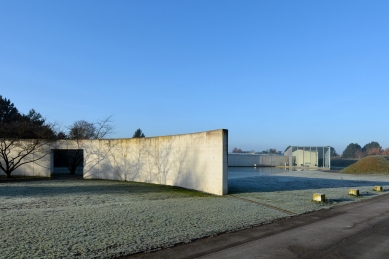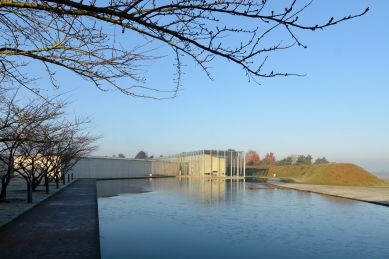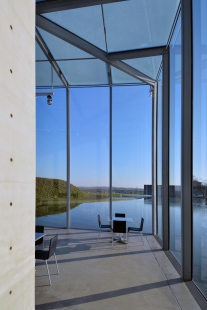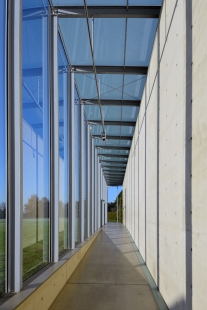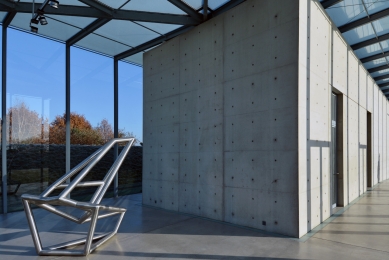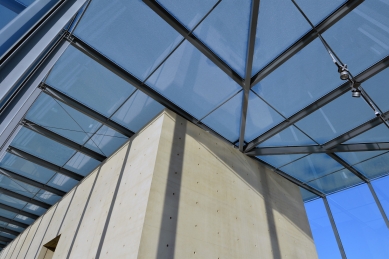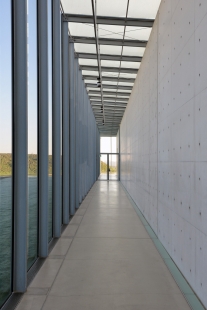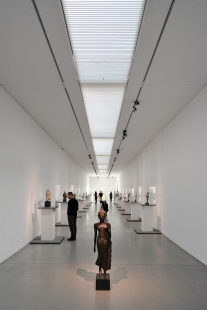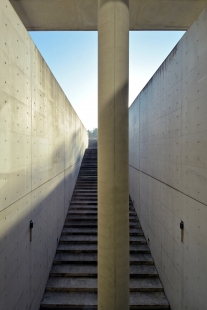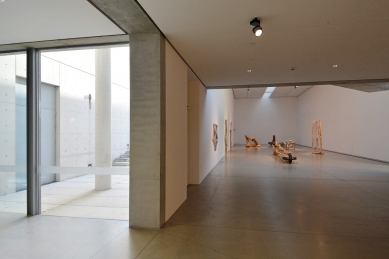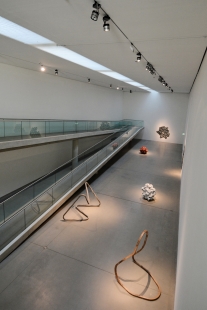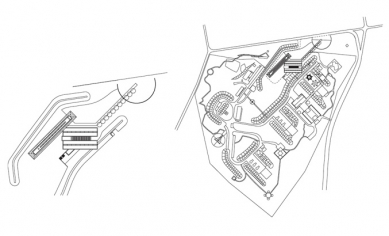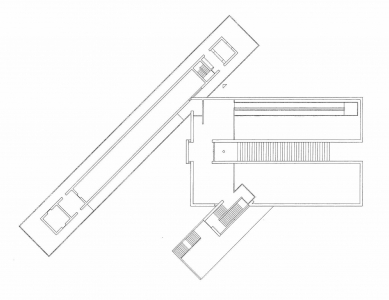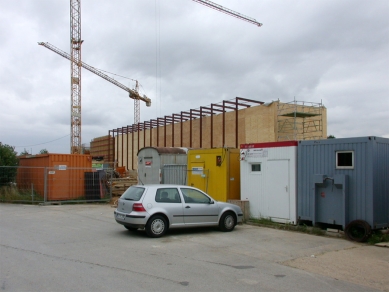
Langen Foundation

On the banks of the river Erft, on the outskirts of Dusseldorf, is an art museum known as Insel Hombroich. As indicated by the name (Insel in German means “island”) the entire site is an island in the middle of a vast marsh area, a nature park museum that is a rarity in today’s world.
The area of 200,000 square metres accommodates a series of sculptures scattered amongst lush vegetation and a number of elegant exhibition pavilions that are themselves works of art by the sculptor Erwin Heerich. Both the sculptures and the pavilions are scattered randomly between the trees.
Since coming into ownership of the land, proprietor Karl-Heinrich Müller has invested considerable resources and time transforming the topography of the place and restoring the natural environment through a programme of reforestation that will eventually return the area to something like it was several centuries ago.
About a kilometre north-west of the Insel Hombroich, on an site occupied by a former NATO missile silo, Müller has opened a new museum for which he himself designed one of the galleries and other architectural features. This was the point of departure for the Langen/Hombroich Foundation project.
We visited the area for the first time in 1994, but because of financial issues, much time was lost between the presentation of the plans and the work actually starting. Further delays were caused by the distance between Japan and Germany. In 2000, Müller’s project was approved by the then 90-year-old Marian Langen, who had allocated the funds for the art museum project, and the building started at the end of 2002. During this long period, however, ideas had progressively gained force and depth. In this sense, although it was exhausting, the delays in getting the project started turned out to be a boon.
The museum housed collections of oriental and modern art belonging to the Langens. The setting for the oriental art is a space of “immobility” pervaded by a suffused light. The other space for the modern art, by contrast, uses a variety of light sources. Recalling the philosophy of Insel Hombroich, where the environment itself has been transformed into a stage for art, the two spaces were inserted into the greenery as discreetly as possible.
The “immobility” of the permanent exhibition is echoed in a concrete structure within a glass enclosure so that running alongside the perimeter is an area similar to the traditional Japanese engawa, or veranda, which blurs the boundary between the indoors and outdoors. Visitors inside the museum feel like they are walking in the woods. The “dynamic” space for temporary exhibitions, on the other hand, is in an entirely underground section where a series of skylights create a spectacle within this sealed box.
Immersed in a splendid natural context, the works of art are not isolated from the visitors: they can be touched. When you see the Insel Hombroich for the first time you are blown away. “This is an art paradise,” you will think. And it was from this that the impulse came to create a museum fully integrated with nature.
The dreams of these two passionate patrons of the arts are incarnated here in this idyllic setting. Sadly, Marian Langen died before it was completed, but perhaps her spirit will continue to live on here.
The area of 200,000 square metres accommodates a series of sculptures scattered amongst lush vegetation and a number of elegant exhibition pavilions that are themselves works of art by the sculptor Erwin Heerich. Both the sculptures and the pavilions are scattered randomly between the trees.
Since coming into ownership of the land, proprietor Karl-Heinrich Müller has invested considerable resources and time transforming the topography of the place and restoring the natural environment through a programme of reforestation that will eventually return the area to something like it was several centuries ago.
About a kilometre north-west of the Insel Hombroich, on an site occupied by a former NATO missile silo, Müller has opened a new museum for which he himself designed one of the galleries and other architectural features. This was the point of departure for the Langen/Hombroich Foundation project.
 |
We visited the area for the first time in 1994, but because of financial issues, much time was lost between the presentation of the plans and the work actually starting. Further delays were caused by the distance between Japan and Germany. In 2000, Müller’s project was approved by the then 90-year-old Marian Langen, who had allocated the funds for the art museum project, and the building started at the end of 2002. During this long period, however, ideas had progressively gained force and depth. In this sense, although it was exhausting, the delays in getting the project started turned out to be a boon.
The museum housed collections of oriental and modern art belonging to the Langens. The setting for the oriental art is a space of “immobility” pervaded by a suffused light. The other space for the modern art, by contrast, uses a variety of light sources. Recalling the philosophy of Insel Hombroich, where the environment itself has been transformed into a stage for art, the two spaces were inserted into the greenery as discreetly as possible.
The “immobility” of the permanent exhibition is echoed in a concrete structure within a glass enclosure so that running alongside the perimeter is an area similar to the traditional Japanese engawa, or veranda, which blurs the boundary between the indoors and outdoors. Visitors inside the museum feel like they are walking in the woods. The “dynamic” space for temporary exhibitions, on the other hand, is in an entirely underground section where a series of skylights create a spectacle within this sealed box.
Immersed in a splendid natural context, the works of art are not isolated from the visitors: they can be touched. When you see the Insel Hombroich for the first time you are blown away. “This is an art paradise,” you will think. And it was from this that the impulse came to create a museum fully integrated with nature.
The dreams of these two passionate patrons of the arts are incarnated here in this idyllic setting. Sadly, Marian Langen died before it was completed, but perhaps her spirit will continue to live on here.
Tadao Ando
0 comments
add comment




